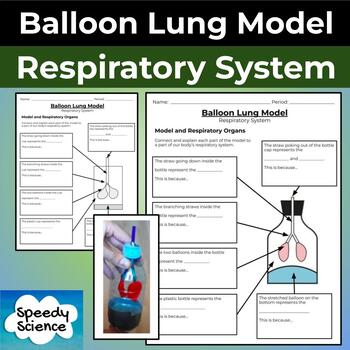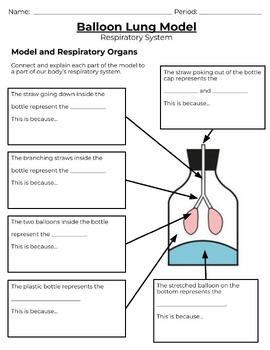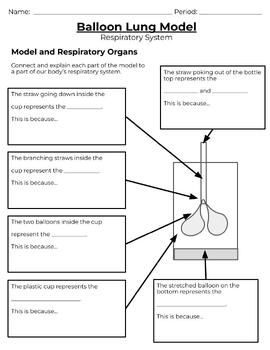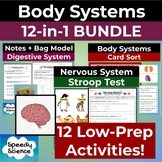Balloon Lung Model: Respiratory System - Body System Activity
Speedy Science
163 Followers
Grade Levels
6th - 8th
Subjects
Resource Type
Standards
NGSSMS-LS1-3
Formats Included
- Google Slides™
Pages
6 pages
Speedy Science
163 Followers

Made for Google Drive™
This resource can be used by students on Google Drive or Google Classroom. To access this resource, you’ll need to allow TPT to add it to your Google Drive. See our FAQ and Privacy Policy for more information.
Also included in
- Make learning Human Body Systems fun with this bundle of 13 activities! Great for middle school life science units about anatomy and the body systems like digestive respiratory nervous skeletal muscular and so much more!Google slides editable! (almost all - check each resource for more info!)-------Price $25.00Original Price $39.00Save $14.00
Description
Students create a balloon lung model and connect the organs of the respiratory system to each part of the model. Great way to visualize this body system!
Includes:
- 2 versions of the student sheet
- 2 versions of the directions
- Answer keys
"The straw going down inside the
bottle represents the trachea.
This is because they bring the air to and from the lungs.
The branching straws inside the
bottle represent the bronchis.
This is because they bring the air to and from the lungs.
The two balloons inside the bottle
represent the lungs.
This is because they fill up with air and then release the air.
The stretched balloon on the bottom represents the
diaphragm.
This is because its up / down movement causes air to go in and out of the lungs."
How to Build the Balloon Lung Model
- Cut hole through plastic cup
- Fold a straw and cut off corner from each side
- Cut off lips from 2 small balloons
- Tape them to the straw ends
- Fold the straw and push it through the hole in the cup
- Trim a medium size balloon in half
- Stretch it over the cup opening
- Tape the model to prevent air escaping
Links to Videos Explaining How to Build This Model:
- MEL Chemistry: DIY Model Lungs
- Amaze Lab School Science Project
- NancyBullard: DIY Respiratory System
- Uses one straw and plastic cup.
- Science Beyond: A Lung Model
- Using one balloon
Total Pages
6 pages
Answer Key
Included
Teaching Duration
N/A
Report this resource to TPT
Reported resources will be reviewed by our team. Report this resource to let us know if this resource violates TPT’s content guidelines.
Standards
to see state-specific standards (only available in the US).
NGSSMS-LS1-3
Use argument supported by evidence for how the body is a system of interacting subsystems composed of groups of cells. Emphasis is on the conceptual understanding that cells form tissues and tissues form organs specialized for particular body functions. Examples could include the interaction of subsystems within a system and the normal functioning of those systems. Assessment does not include the mechanism of one body system independent of others. Assessment is limited to the circulatory, excretory, digestive, respiratory, muscular, and nervous systems.





